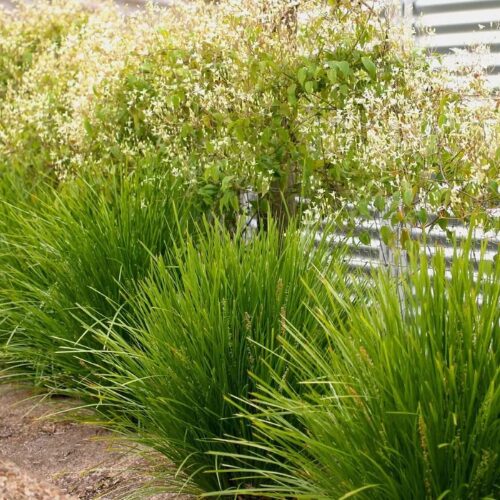




Raspberry Jam Wattle is a native WA wattle species named after its strong aroma of the cut wood resembling raspberry jam. It’s also known as jam tree, raspberry jam tree or fine leaf jam in English, and Manjart, Munertor, Mungaitch or Mungat in Noongar. This tree had several uses for in Aboriginal food and lifestyle, producing resin and seeds for food, and hardwood for tools and weaponry. Raspberry Jam Wattle is endemic to Western Australia, found commonly in the southwest and through the Wheatbelt.
In Aboriginal cooking, the edible seeds were traditionally ground into flour and coal-baked into small cakes. Seeds are about 5mm in diameter, disc shaped, and grow in long seed pods during the warmer months. The orange-coloured gum (resin) is also edible and can be used to make tea. Because the wood is dense, beautifully grained and termite resistant, its highly prized for furniture making, fence posts and a slew of other uses in the home and garden.
Raspberry Jam Wattle flowers heavily in Spring, providing an aromatic display of fuzzy golden rods while attracting bees and native birds to the garden. Seed pods follow in the Summer, which can be harvested from the tree or collected off the ground.
This is a hardy tree that prefers a freely draining soil. It prefers full sun but will handle part shade, and tolerates drought, salt and frosts. Like nearly all Acacia species, Raspberry Jam Wattle is a nitrogen fixer, effectively sucking nitrogen from the air and installing it in the soil around its roots. This provides food for surrounding plants, such as Quandong and Sandalwood, making it an excellent companion or host species.
In ideal conditions, Raspberry Jam Wattle can reach up to 10m, but usually grows to around 5m in a suburban garden. It makes an ideal windbreak, privacy screen, fauna attractor, ornamental tree and beekeeper’s delight.
Aboriginal name(s):
- Manjart (Noongar)
- Munertor (Noongar)
- Mungaitch (Noongar)
- Mungat (Noongar)
| Pot Size |
|---|






